|
|
|
 |
An Interview with the Author of “Resurrecting Leonora Piper”
Posted on 31 December 2012, 14:47
As my latest book, Resurrecting Leonora Piper, was just released by White Crow Books, I asked my higher self (HS) to interview my lower self about the book.
So Michael, what prompted you to write this book?
You put me up to it, HS, so you know the answer better than I do, but I am glad you asked because it helps potential readers, as well as myself, understand why I wrote it. As you have so often reminded me, the root cause of so much of the turmoil and chaos in the world today is a result of the lack of belief in a spirit world and the survival of consciousness at death. Even those who claim to believe don’t really believe. The blind faith of most is simply hope and doesn’t seem to be enough to deter them from their Epicurean and hedonistic ways, i.e., “eat, drink, and be merry for tomorrow we die.” To put it another way, most people are totally absorbed in mundane material pleasures and fail to see the reality you have shown me. I believe that the scientific research with Mrs. Piper, (below) properly understood and appreciated, can help some people move from blind faith to true faith, or conviction, perhaps even move a few open-minded people who have no faith at all to at least consider the possibility that there is a much larger life than this one, allowing them to put things in perspective.
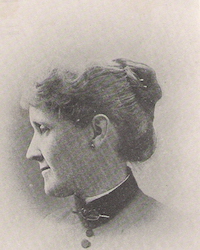
But you had another reason, right?
Oh, yes, I know what you mean. To my knowledge, there are only two books devoted exclusively to the Piper story, one by Michael Sage, published in 1904, and the other by Alta Piper, Mrs. Piper’s daughter, in 1929. A number of authors have given her a chapter or two in their books about various supernatural stories, mediumship, whatever, but I don’t think any of them does the story justice. I felt that a book was needed to tell a more complete story and to separate the wheat from the chaff.
Please explain what you mean by that.
There was a lot of what William James called “bosh” mixed in with genuine communication. I try to explain why there was so much bosh and filter out that bosh so that the real stuff can be better understood.
But the research surrounding Mrs. Piper is a century old. Why not something more current?
Because there has been nothing approaching the research done with her, which was primarily from 1885 until 1910 or thereabout, since, or nothing as convincing. People who have heard about her think that she was observed a few times by several researchers. They don’t realize that Dr. Richard Hodgson (below) studied her mediumship on the average of three times a week for some 18 years, not to mention numerous sittings by Professors William James, Oliver Lodge, James Hyslop, William Newbold, and others representing the Society for Psychical Research (SPR). There was some good research by SPR members with British medium Gladys Osborne Leonard beginning around 1915, but, for both quality and quantity combined, I think the research with Mrs. Piper tops all others, before or after.
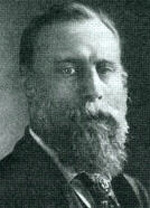
So who was Leonora Piper?
She was a Boston housewife, born June 27, 1859 in Nashua, New Hampshire as Leonora Evelina Simonds. Although she apparently had some clairvoyant experiences during her childhood, she didn’t become aware of her mediumistic ability until 1884, when, while sitting with a small group, she went into trance, got up from her chair, walked to a table in the center of the room, picked up a pencil and paper, wrote rapidly for a few minutes, then handed the paper to Judge Frost, a hard-headed and respected jurist, after which she returned to her chair, still entranced. After regaining consciousness and having no recollection of what took place, she was told by Frost that the paper contained a remarkable message from his son, who had been fatally injured in an accident some 30 years earlier.
So she was a writing medium?
During the first seven or eight years of her mediumship, she was a trance-speaking medium. After she went into a trance state, the spirits would speak through her vocal cords, usually in a voice and manner much different from her own. In 1892, when another control began taking over, she became more of a trance-writing medium, but there were a few times when her hand would be controlled by one spirit at the same time another spirit was speaking through her, and there was one time recorded by Hodgson that that both hands were writing different things at the same time as she spoke. In other words, three discarnates were communicating at the same time, one through each hand and one through her vocal cords.
You’d better explain what you mean by “control.”
Good idea, HS. That really confuses a lot of people. Apparently, it is not that easy for spirits to communicate with the material realm, so they require a “medium” on their side, called the control. In effect, what usually took place was the communicating spirit had to give his or her message to the control, who had to interpret it, then get it through Mrs. Piper’s mind and vocal cords to the person the spirit was communicating with. Thus, there were usually four parties – the communicating spirit, the control, the medium on this side (Mrs. Piper), and the person receiving the message. There were a few spirits, however, who didn’t need the assistance of a control and could communicate directly through Mrs. Piper.
Sounds quite complicated!
Definitely, and that’s why there were so many mistakes, so much confusion, so much bosh. There were a lot of misinterpretations. Often the control had to interpret what the communicating spirit was telling him and didn’t get it right. Even William James was slow to grasp it. Initially, he thought that Mrs. Piper alter ego was “fishing” for information from the sitters. Hodgson and the others came to realize that the fishing was taking place on the other side. That is, the control was trying to figure out what the communicating spirit was trying to get across.
Why haven’t we had that kind of research over the past 100 years?
It would call for too many words here to give you my thoughts on that, but I believe there was a plan behind it all – a plan by the spirit world to help us overcome the growing materialistic worldview of the late 19th Century – and they did their best to enlighten us, but because mainstream science and orthodox religion resisted it, their efforts stopped, as they had gone well beyond the point of diminishing returns. Sometime during the late 1920s, psychical research changed to parapsychology and the whole survival issue got swept under the rug. It was not respectable to discuss it in academic and scientific circles and there was no funding for research in this area. There was a little research with mediums at the University of Arizona a dozen or so years ago and some good research going on now at The Windbridge Institute in Tucson, but that research is all with clairvoyant-type mediums, I believe. I don’t see that type of mediumship as impressive or as convincing as that carried out a century ago with Mrs. Piper and others.
Why is that?
The clairvoyants and clairaudients get evidential words and ideas, which they attempt to interpret, but in the trance mediumship of Mrs. Piper, her body was taken over by the communicating spirits who dialogued with the sitters. That type of mediumship demonstrates personality much more than clairvoyant/clairaudient type. So much of it was beyond Mrs. Piper’s knowledge and experience.
How about an example?
Sure. When Anne Manning Robbins was sitting with Mrs. Piper, she heard from her old boss, Augustus P. Martin, who had been mayor of Boston during the 1880s and later served as the city’s police commissioner and water commissioner. Robbins had been his administrative assistant for a number of years. She asked him what his first experience was immediately after he “died.” Martin replied: “When I first passed out my mind was cloudy, rather confused. I felt as though I was going into space, did not know where, drifting as it were, for a few hours – that was all – and then I felt as though there was a strong hand grasped me and said to me: ‘It is all right, it is all over.’ And I said: ‘What is over?’ I could not seem to understand what it all meant, and after a little while, perhaps an hour, possibly an hour or two, I saw oh such a light! You cannot imagine it, cannot conceive what it is like. It is the most brilliant and yet the softest moonlight that you ever saw, and I thought, what a beautiful light it was! And all of a sudden I saw people moving about. I saw their heads, their figures. Then they seemed all clad in white, and I could not seem to make them out. They were moving in the air…”
But you wouldn’t call that evidential, would you?
No, I just wanted to show how different it is than the clairvoyant/clairaudient mediumship that people are familiar with today. There was plenty of evidential material coming through Mrs. Piper.
How about summarizing just one bit of evidential information?
OK. On December 28, 1888, the Rev. W. H. Savage was sitting with Mrs. Piper and was told that Robert West was there and wanted to send a message to Dr. Minot Savage, the brother of W. H. Savage. West said he wanted to apologize to Minot for something he had written “in advance.” W. H. Savage did not know West and did not understand the message, but he passed it on to Minot, who understood it and explained to his brother that West was editor of a publication called The Advance and had criticized him in an editorial. During the sitting, W. H. Savage asked for a description of West. An accurate description was given along with the information that West had died of hemorrhage of the kidneys, a fact unknown to Savage but later verified. West also told W. H. Savage that his body was buried at Alton, Illinois. He gave the wording on his tombstone, “Fervent in spirit, serving the Lord.” Savage later confirmed this as fact. (I wonder if anyone living in or near Alton could find that old tombstone and photograph it for this blog.)
Wow! That’s pretty impressive, seemingly outside the scope of mind reading.
Clearly, how could she be reading W. H.’s mind when he didn’t know who West was in the first place? The pseudoskeptics would say that Mrs. Piper dug up the information beforehand. They don’t stop to think how difficult or expensive that would have been back in the 1880s. Besides, as the researchers make clear, most of the time Mrs. Piper was not told who would be sitting with her any particular day.
How about one more example?
My publisher might get upset if I give all the stories away here, but there are so many I see no harm in giving one more. Soon after he died in 1905, Richard Hodgson, as mentioned above, the lead researcher for 18 years, began communicating through Mrs. Piper with William James and other researchers. James asked Hodgson if he remembered the time he was playing with children at Putnam Camp in the Adirondacks. The discarnate Hodgson recalled sitting in front of the fireplace reading when Martha Putnam crept in behind him, jumped on his back and put her hands over his eyes, asking if he knew who it was. Hodgson replied that it sounded like Martha but it felt like Henry Bowditch, who weighed over 200 pounds. James considered this very evidential as he doubted that anyone else remembered the trivial incident. Hodgson also talked about playing leap-frog and “bear” with the children, which James confirmed as correct.
I’m impressed, Michael. Any concluding thoughts?
Let me just wind it up by quoting Professor Herbert Nichols, initially very skeptical, as he wrote it to William James: “I had a wonderful sitting with Mrs. Piper. As you know, I have been a Laodicean toward her heretofore. But that she is no fraud, and that she is the greatest marvel I have ever met I am now wholly convinced.”
Next blog post: January 14
Michael Tymn is the author of The Afterlife Revealed: What Happens After We Die is published by White Crow Books. His latest book, Resurrecting Leonora Piper: How Science Discovered the Afterlife will be available on January 14, 2013.
Read comments or post one of your own
|
 |
Where Was God During the Newtown Tragedy? A Philosopher Answers
Posted on 17 December 2012, 14:33
After the recent mass killing of 20 school children and seven adults by a deranged young man in Newtown, Connecticut, some people were asking where God was during the tragedy. Why wasn’t “He” protecting those innocent young children? How can “He” let such terrible things happen? At the same time, some parents whose children escaped the carnage thanked God for protecting their children. What kind of God is it that favors some children over others? It is this type of thinking, this conundrum, that causes believers to become non-believers and fuels the atheist’s arsenal.
“If we have free will, then responsibility for human evil rests with humankind, not God,” says Dr. Howard A. Jones, (below) a British philosopher of science. “We should not be searching continually for others to blame for our own failings.” As Jones sees it, there is no anthropomorphic “sky-god” looking down upon the world from some heavenly throne with the ability to pull strings, permitting harm to some while preventing it with others. There is, however, Jones contends, overwhelming evidence for the existence of an effective and interactive cosmic spiritual energy or consciousness that is governed by the thoughts of all humans.
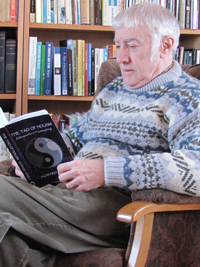
“No matter whether you call this global consciousness God, goddess, Spirit or Source, it is certain that unkind thoughts weaken and kind thoughts strengthen our connection with it,” Jones offers in his recently-released book, Evolution of Consciousness, thus suggesting that when the negative thoughts and behavior outweigh the positive thoughts and behavior, bad things, like that of Newtown, happen. A number of other philosophers, sages, and mystics have said much the same thing; that is, when the balance of good and evil tilts in favor of the “forces of evil,” bad things start happening.
“While the cosmic spirit concept may not be compatible with orthodox religion, nor applicable to Newtonian science, it is time for acceptance and promotion of spirituality rather than scriptural religion to provide some unity to our increasingly fragmented and socially uneasy world,” Jones states, adding that it is possible to have faith and believe that the soul lives on in an afterlife without accepting the terrible, vengeful, authoritarian, and vindictive God of orthodoxy. He emphasizes that a “sky-god” is not a prerequisite to the survival of consciousness after death and an afterlife environment, something which neither mainstream science nor orthodox religion appears to grasp, as both seem to believe that they are concomitants and that God must be identified before the survival issue can be addressed or the evidence for it considered.
In an earlier book, The Thoughtful Guide to God, Jones, a retired scientist, educator, and medical researcher, argued that scripture and religion are man-made. “They represent the ‘Word of God’ only insofar as the prophets were inspired by the universal spirit just like every author, poet, composer or creative artist,” he asserts. “Scripture simply presents one man’s (or occasionally one woman’s) view of how we should best lead our lives. Many of the assertions of scripture are rationally absurd, mutually contradictory and in many cases morally offensive – like the idea of putting one man to death to assuage the sins of other people. Especially is this so as the so-called ‘sins’ arose in the first place from a fairy-tale couple who clearly no sane and rational person could regard as factually real. But if one accepts the experimental evidence and rational explanation of the infinite and eternal cosmic energy, the existence of a spiritual component of being called soul that continues to exist after mortal death is an inevitable conclusion, and a picture of a cosmic deity is simply one fanciful interpretation.”
Jones believes that quantum physics supports a spiritual world, pointing out that the interaction of matter at the subatomic level indicates an exchange of energies that is independent of restrictions of space and time. “This is holism at work at the most fundamental level,” he explains. “The quantum world view tells us that some properties of these fundamental particles are rather imprecise and ill-defined. We have to describe their behaviour using statistical calculations rather than the algebraic equations we all met in school. This is indeterminism. We find that the solid objects of our material world are really mostly space. But this is not empty space but space filled with fields of force that hold atoms and molecules in place. So we cannot any longer draw a sharp dividing line between matter and waves of energy, including the waves of energy that make up the processes of mind. This is a picture of idealism in the world.”
The Evolution of Consciousness, Jones explains, was inspired by the philosophy of Johann Fichte (1782-1814), who further developed the romantic philosophy of Immanuel Kant (1724-1804), which maintained that thought itself is the ultimate reality, not a God that Man created in his own image. In effect, it holds “that human consciousness is the source of all our interaction with the world and even our concept of the material world – described by the eastern term maya.” The bottom line is that if we adopt a positive, constructive and loving attitude toward the world – other people and the Earth itself – this attitude will be reflected back to us.
Jones subscribes to the beliefs of Canadian psychiatrist Richard Maurice Bucke (1837-1902), who, in his classic book, Cosmic Consciousness, distinguished three realms of consciousness – simple (that of the animal kingdom), self-consciousness (of humans), and cosmic consciousness (an awareness of the order of the universe). The goal is to move or evolve to the latter stage. “It is the path of the human soul, both on Earth and in Spirit, to learn and continually evolve,” Jones writes. “As soul is complementary to mind, this process of spiritual growth on both the Earth plane and in the afterlife is the individual evolutionary path of consciousness.”
Lamenting the current state of the world, Jones concludes that “too many people are sleep-walking though life like drones” and indulging themselves hedonistically. He is especially critical of the educational system of which he was once part, pointing out that high marks are now given for mediocre performances, while the decline in literacy and mathematics shows no sign of reversal. “The reduction in standards of learning and behaviour over my lifetime has been quite appalling,” he opines.
He faults both mainstream science and orthodox religion for the sad state of affairs in today’s world. “Science is a very conservative philosophy and practice,” he declares. “The world-view of most scientists is still based on the ideas of Francis Bacon (reductionism), Isaac Newton (determinism) and René Descartes (materialism). There is a great need for scientists to emerge from their safe haven of denial and face the overwhelming experimental evidence of psychic events, especially since there is now a rational, theoretical underpinning available to explain these phenomena.” Until science opens itself up to the world of spirit, he believes, evolution will be greatly impeded.
Religion, he contends, has gone too far in creating various kinds of God images as ‘cause’ and ‘controller’ of all phenomena, thereby dismissing any concept of universal spiritual energy. “Religion has reduced humankind to puppets acting out God’s scenario. Any thoughts of Spirit or Universal Mind within Nature, as pagans believed, had to be eradicated if the rationally unbelievable precepts of Christianity were to be implemented.” He finds the attitude of the Church relative to psychic phenomena, including evidence for the spirit world, puzzling. “One would have thought that this would tend to make people more religious; but perhaps the reality is that it makes people realize how irrelevant so much of the Church’s teaching really is. The Church appears to want discarnate existence as a privilege accorded only to Jesus, Mary and a few saints and communication with such discarnate souls as the right only of its priests.”
“The human individual is basically an eternal spiritual being, housed for just a few decades in a physical body,” Jones concludes the book. “It is this spirituality that is the essence of existence. Where like-minded groups gather together to promote this universal and holistic spiritual imagery, the impact can be made more potent than by all the individuals working alone.”
And when the positive acts and thoughts begin to outweigh the negative, we should see fewer and fewer heartbreaks, such as the one in Newtown.
Personally, I have no difficulty accepting God – whatever He, She, or It is – as something I am unable to comprehend or visualize. Nor do I have any difficulty seeing Jesus as something akin to “Chairman of the Board” on the Other Side without him donning the God robe. I like the way Silver Birch, the advanced spirit who spoke through the trance mediumship of Maurice Barbanell, put it: “The Nazarene is one of the hierarchy behind all the directives we receive when we leave your world occasionally to fortify ourselves to cope with our missions and to glean more of what it is we have to achieve. I have great reverence for Jesus, the Nazarene, a wondrous example of what the power of the spirit could achieve when divinity assumes human form and gives to those available simple but profound teachings that love is a power that solves all problems when people allow themselves to be animated by it.” Such words provide me with more than enough to celebrate Christmas this year.
But back to the slain Children of Newtown, whatever form God takes, how are we to make sense of it? Silver Birch also answered that question: “As long as people judge eternal principles by material standards they will never understand those things,” he replied, when asked why babies and children are allowed to perish. “The wisest of your wise ones do not see beyond earthly knowledge. When the light of spiritual knowledge reaches them through their evolution, then they will see the plan which is, as yet, not revealed to them. They see through a glass darkly, and so they do not understand. Would you attempt to judge the life of a schoolboy by only the years that he goes to school, and ignore the greater life which starts beyond school? There is a greater life than the one in which you live – a world of beauty, a world of colour, a world of love, a world of labour, a world where every sincere desire finds expression, where every creative impulse can express itself, where everything that cannot be fulfilled in your world is able to realise itself. Until you have seen this world, you cannot criticise the Great Spirit.”
Michael Tymn is the author of The Afterlife Revealed: What Happens After We Die is published by White Crow Books. His latest book, Resurrecting Leonora Piper: How Science Discovered the Afterlife will be available on January 14, 2013.
Howard Jones can be found here.http://www.spiritofoneness.co.uk/howardbooks.htm”> http://www.spiritofoneness.co.uk/howardbooks.htm
Read comments or post one of your own
|
 |
From Skepticism to Cynicism to Savage Antipathy
Posted on 10 December 2012, 14:44
Hardly a day has gone by during the past few weeks when I have not noticed an article of one kind or another by some self-appointed guardian of science attacking Dr. Eben Alexander and his book Proof of Heaven (see prior blog entry). They spew animosity, cynicism, hostility, antagonism, bitterness, rancor, enmity, and contempt.
The attackers seem to be of two types. First, there are the more educated who write the articles and blogs. They smirk and snicker in righteous indignation, seeing Alexander as simply deluded and his claims as lacking scientific foundation. The second type, the less-educated, post comments at blogs or write letters to the editors. They come across as rednecks who were brainwashed by their high school biology teachers and don’t realize that a belief in biological evolution is not opposed to a spiritual world. They wave the banner of science but know very little about the scope of science. They scoff and sneer at the “ridiculous” claims of Alexander, as if they are truly enlightened. Even though it is usually clear that they haven’t read the book, they try to sabotage the Amazon.com book rating by giving it the lowest rating possible in order to bring down the overall rating. Both types see Alexander as a disgrace to science, a money-hungry traitor out to make millions on his book while leading the gullible astray.
I have often struggled to find a word to describe the attitude of such people. I don’t think “Skepticism” is the proper word as a skeptic, by definition, is someone who questions and sometimes doubts but has not made up his or her mind, which is open to change. Some would call it pseudoskepticism, (pseudo = pretend), but this term is not always applicable as not all of them pretend to be skeptics. They simply know it all – no ands, ifs, or buts about it.
Perhaps the term applied to it by Irish journalist Brian Inglis is his 1977 classic, Natural & Supernatural, best describes it. Inglis calls it “savage antipathy.” He devotes a chapter of his comprehensive book to the “the growth of scepticism,” using the more British spelling of the word. (Being a colonist, I’ll opt for the “k” in the word.) Inglis traces the roots of skepticism back to Aristotle, (below) who began questioning the supernatural stories of his teacher, Plato, and Plato’s teacher, Socrates. Skepticism’s first manifesto was authored three centuries later by Cicero, who made it clear that he did not accept the reality of sacrificial divination in any form, though open-minded to the more inspirational aspects of divination. Jumping ahead to the late 14th Century, Inglis cites the Catholic Church’s policy of appointing a Promotor Fedei (Promoter of the Faith), also called the Advocatus Diaboli, or Devil’s Advocate. It was the Devil Advocate’s job to take the skeptical view of the various miracles credited to the person nominated for sainthood and argue against his or her canonization. .
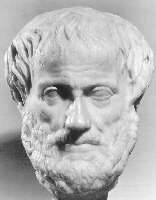
According to Inglis, “modern” skepticism’s first manifesto appeared in the middle of the 18th Century with David Hume’s essay on miracles. “Hume (below) did not attempt to disguise that his aim was polemical, rather than scientific,” Inglis explains. “He was out to undermine the arguments of Christianity’s apologists in order ‘to silence the most arrogant bigotry and superstition and free all of us from their impertinent solicitations.’ To that end, he boasted, ‘I flatter myself that I have discovered an argument of a like nature which, if just, will with the wise and learned be an everlasting check to all kinds of superstitious delusions, and consequently will be useful as long as the world endures.’”
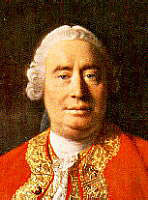
When during the latter part of the 18th Century Franz Mesmer introduced what was at first called animal magnetism, and later mesmerism, and then hypnotism, the skeptics had to rethink their view on miracles and related phenomena. Drawing from the Cabalist tradition, Mesmer propounded the theory that a subtle fluid permeates the universe and associates all things together in mutual intercourse and harmony. The fact that some mesmerized subjects demonstrated clairvoyance suggested something other than the mechanistic universe that science had settled upon. A number of advocates of mesmerism believed there was spiritual component to it, but science scoffed at the idea.
Exactly when true skepticism turned to cynicism and then to savage antipathy is difficult to pinpoint, but it seems to have manifested for the most part during the late 19th Century in the Age of Darwinism – a time when true skeptics became total disbelievers in anything spiritual because spirituality and religion were, to them, synonymous, and thus they were unable to reconcile biological evolution with the “myths” and “fables” of the Bible, especially the creation story. Falsus in uno, falso in omnibus – false in one, then false in all – seems to have been the logical conclusion. After all, if the Bible had been inspired by God, as religious leaders proclaimed, how could an all-knowing God be so wrong? Therefore, god must not exist, and if there is no god, then there must not be an afterlife, either, was the “rational” assumption.
Even popular current authors advocating atheism and nihilism are not able to separate the anthropomorphic God issue from the survival of consciousness issue. Like many religions they somehow conclude that religion’s “God in the sky” must be fully identified before the afterlife issue can be considered, rather than taking the opposite approach. One recent Internet post, tied to the discussion of Dr. Alexander’s conclusions from his near-death experience, asked a dozen or more modern-day scientists about their views on the afterlife, and several of them started out by discussing the lack of evidence for God rather than addressing the evidence for survival, which they likely have dismissed without even examining it.
Indications are that the spirit world took notice of this loss of belief during the 19th Century and tried to do something about it by initiating various phenomena through sensitives, called mediums. This “spiritualism” movement was simply too much for the “rational” man and was countered, at first, by simple skepticism, which gave rise to cynicism, and then savage attacks. One of the best recorded instances of savage antipathy involved the medium D.D. Home and poet Robert Browning. Even though Browning had witnessed some amazing spirit phenomena with Home and initially attested to it, he apparently became upset because his wife, poet Elizabeth Barrett Browning, was so enamored of Home, and, perhaps out of jealousy, Robert Browning called Home a cheat and impostor, writing a disparaging poem about a Home-like medium called “Mr. Sludge, the Medium,” in which he portrayed the medium as a psychopath and fraud.
As Inglis observes, Sir David Brewster, a renowned British scientist, followed a similar course, first praising Home but when he was criticized by his scientific colleagues, he retracted his testimony, calling Home a fraud, and saying that he must have hidden something under the table, and that nobody was allowed to look under the table. After Brewster’s death, however, his daughter published his memoirs, inadvertently including a letter in which Brewster disclosed that he had been invited to make an inspection under the table and in which he implied that it was all beyond trickery.
After hearing the explorer Galla praise another medium, Brewster commented that “the world is obviously going mad.” Before retracting his testimony about Home, Brewster suggested that the phenomena he had witnessed might be genuine, but he rejected the idea that spirits were behind it all. “Yet here were the spirits – or, at least some force with the ability to manifest a measure of intelligence – moving tables, a process which could not simply be dismissed as occultist nonsense, because so many intelligent and skeptical people were witnessing it,” Inglis offers.
Sir Oliver Lodge, a world-renowned physicist and pioneer in electricity and radio, was also mocked by his scientific colleagues when he reported on his research into psychic phenomena and what he saw as the reality of it. “It is not easy to unsettle minds thus fortified against the intrusion of unwelcome facts; and their strong faith is probably a salutary safeguard against that unbalanced and comparatively dangerous condition called ‘open-mindedness,’ which is ready to learn and investigate anything not manifestly self-contradictory and absurd,” Lodge reacted to the criticism.
As mentioned in my prior blog, in his recently-released book, Science Set Free, Dr. Rupert Sheldrake, a world-renowned biologist and a clear exception to the more fundamentalist scientist, points out that many scientists are unaware that materialism is an assumption and only think of it as science. He further states that certain beliefs are taken for granted without any thought being given to them. “In no other field of scientific endeavor do otherwise intelligent people feel free to make public claims based on prejudice and ignorance,” Sheldrake writes. “…Yet in relation to psychic phenomena, committed materialists feel free to disregard the evidence and behave irrationally and unscientifically while claiming to speak in the name of science and reason. They abuse the authority of science and bring rationalism into disrepute.”
Note: The above-referenced book, Natural & Supernatural, by Brian Inglis, (below) is available from White Crow Books.
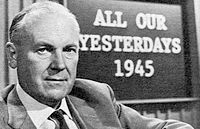
Michael Tymn is the author of The Afterlife Revealed: What Happens After We Die is published by White Crow Books. His latest book, Resurrecting Leonora Piper: How Science Discovered the Afterlife will be available on January 14, 2013.
Next Post: December 24.
Read comments or post one of your own
|
|
|
|